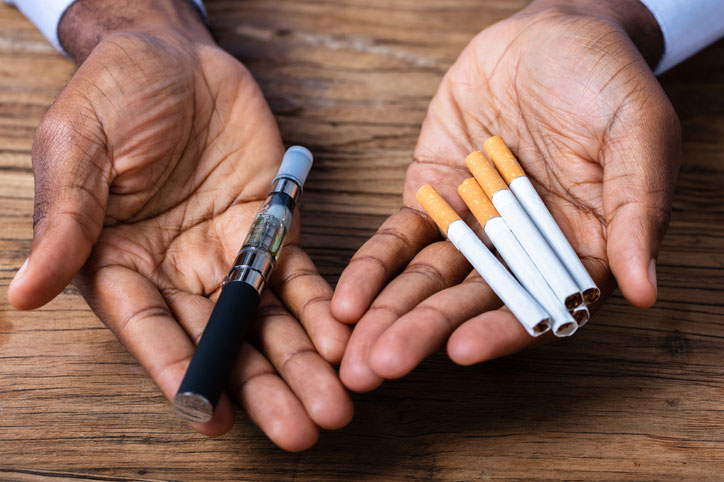Vype electronic cigarettes represent a specific brand within the broader e-cigarette market. Comparing them directly to traditional cigarettes requires examining harm reduction potential and emerging risks, based on current research:
Potential Advantages Over Combustible Cigarettes
- Reduced Exposure to Certain Toxins: Unlike traditional cigarettes, e-cigarettes like Vype do not burn tobacco, eliminating the user’s exposure to combustion byproducts such as tar and carbon monoxide (References 2, 5, 7, 8).
- Nicotine Delivery Control: Vype offers options to potentially adjust nicotine levels in the e-liquid, which could theoretically assist in reducing nicotine dependence over time (References 2, 5, 7, 8).
- Reduced Secondhand Aerosol: While not harmless, e-cigarette aerosols generally contain significantly lower levels of many toxic compounds found in cigarette smoke, potentially reducing harm to bystanders compared to traditional secondhand smoke (References 3, 6, 8).
Significant Health Concerns & Unknowns
- Metal Toxicity Risks: Recent studies, including one published in ACS Central Science (Reference 1), found that certain disposable e-cigarettes (like some potentially representing the Vype format) release toxic metals (lead, nickel, chromium, antimony) at levels exceeding those in traditional cigarettes and safety thresholds. Metal emissions increased with usage.
- Contaminant Sources: Contamination originates from the e-liquid itself, the heating coil releasing nickel, and lead-leaching components like copper alloy parts within the device (Reference 1).
- Nicotine Addiction: Vype products contain nicotine, maintaining addiction risk, especially problematic for youth uptake (References 3, 5, 7).
- Long-Term Health Impact: The long-term respiratory, cardiovascular, and overall health effects of inhaling e-cigarette aerosols and their flavorings remain inadequately studied and largely unknown (References 3, 5, 8).
- Secondhand Aerosol Risks: Vype aerosols still contain nicotine, potentially toxic organic compounds (like aldehydes, polycyclic aromatic hydrocarbons), and metals, posing health risks to bystanders. Aerosols elevate indoor PM2.5 and PM1.0 levels substantially (References 3, 6).
- Youth Appeal & Illicit Markets: Flavored options, often preferred by young users, and sometimes illicit devices (potentially including counterfeit or non-compliant Vype products) exacerbate exposure risks for vulnerable populations (Reference 1).
Is Vype a Safer Alternative? Key Considerations
- Less Harmful ≠ Harmless: While switching completely from smoking to regulated e-cigarettes may reduce exposure to some carcinogens, significant health risks persist, including nicotine addiction and potential exposure to novel toxins like heavy metals.
- Variability & Quality Issues: Metal contamination levels vary dramatically between brands and devices. Quality control remains a significant concern (Reference 1). Vype-specific data on emissions is limited.
- Not Proven Smoking Cessation: While used by some for smoking cessation, their long-term effectiveness compared to approved cessation methods is debated. WHO advises they are not proven cessation tools (Reference 3). Gradual nicotine reduction requires strict adherence.
- High-Risk Groups: Youth, young adults, and pregnant women are particularly vulnerable to the adverse effects of nicotine and heavy metals (Reference 1).
Conclusion: Vype e-cigarettes eliminate exposure to combustion-related toxins like tar and carbon monoxide found in cigarettes. However, they introduce distinct risks, including significant exposure to harmful metals like lead and nickel in some cases, continued nicotine addiction, and unknown long-term effects. They should not be considered risk-free and are strongly discouraged for non-smokers and youth. Smokers seeking harm reduction should prioritize quitting nicotine entirely using approved cessation methods. Regulated e-cigarettes should only be considered as a last resort for smokers unable or unwilling to quit by other means, acknowledging the ongoing health risks. Newer research on metal toxicity raises serious concerns about specific product safety.











